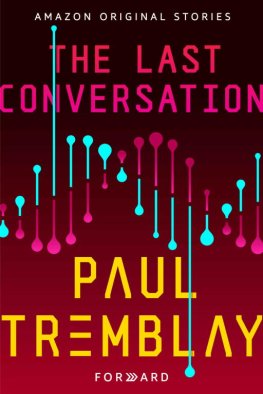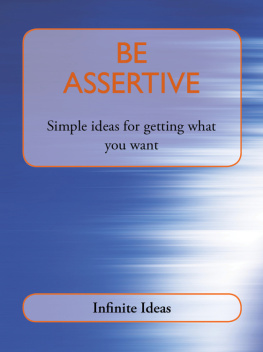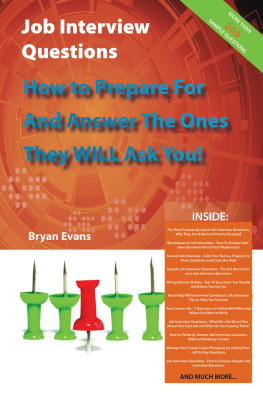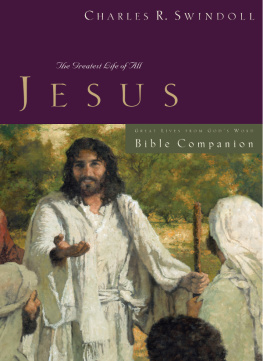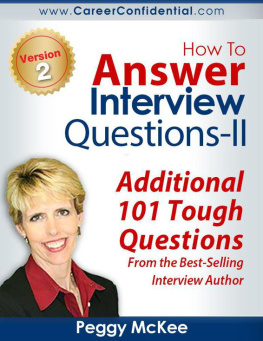

This edition first published in 2018 by Career Press, an
imprint of Red Wheel/Weiser, LLC.
With offices at:
65 Parker Street, Suite 7
Newburyport, MA 01950
www.redwheelweiser.com
www.careerpress.com
Copyright 2018 by James O. Pyle and Maryann Karinch
All rights reserved. No part of this publication may be reproduced or transmitted in any form or by any means, electronic or mechanical, including photocopying, recording, or by any information storage and retrieval system, without permission in writing from Red Wheel/Weiser, LLC.
Reviewers may quote brief passages.
ISBN: 978-1-63265-143-3
Library of Congress Cataloging-in-Publication Data
available upon request.
Cover design by Kathryn Sky-Peck
Cover photograph iStock
Interior photos/images by Maryann Karinch
Interior by Lauren Manoy
Typeset in Palatino and Helvetica Neue
Printed in Canada
MAR
10 9 8 7 6 5 4 3 2 1
www.redwheelweiser.com/newsletter
DEDICATIONS
JAMES O. PYLE
To my mom, Wanda Josephine Pyle of Milton, IL, who before she passed at the age of 85 in 2009, believed in me and did the best she could for me, my brothers, and my sisters as well.
Mom, I hope this dedication puts a little dent in a very big IOU.
MARYANN KARINCH
To my mother, brother, Jim McCormick, and Greg Hartley.
ACKNOWLEDGMENTS
JAMES O. PYLE
F or a book about answers, first this question: How do I acknowledge and thank all the people who have trained, mentored, and put up with me in this lifetime? My words are not just my own for they all have contributed to this writing. My voice is not just my own, but it speaks from so many people from so many places, about so many things from five years before rock-and-roll music in 1950 to now, some sixty-eight-plus years later.
In the professional arena, I am grateful to fellow veteran and author Greg Hartley for his work with Maryann and introducing us in 2013.
I am equally amazed and appreciate Maryann for her ability to weave the brightly colored threads of our combined life experiences, professional and personal, into a tapestry so easy to read, assimilate, and alter for the good with this new way to consider questions and responses.
And more personally it has to be said, I could not be the person I am or do what I do without my good wife, Debbie, who supports completely, adjusts accordingly, and carried the weight to keep the family balance during this last winter's write.
A very special thank you to my children Jimmy, Corrie Anna, Sharon Marie, Jamie, and Megan for all the years they listened to learn, questioned to learn, and still listen and still question as they will this latest lesson for life. It was from them, and Megan in particular, where the very seed for this book was planted and took quick root.
MARYANN KARINCH
Here's a question I know you can answer: How much fun is it when someone you enjoy is on the other end of a phone call? Well, I would have to say that's how I felt when Jim Pyle and I had our regular calls to develop this book. Together, we joyfully explored the skill sets associated with responding well to questions and feeling confident in any conversation. I thank him for a productive and gratifying partnership.
Also up-front on the list of people to thank is Greg Hartley. Jim and I wouldn't know each other, and maybe not even understand each other as well, if it weren't for Greg. He has been a mentor extraordinaire! Our relationship as coauthors and as friends has been life changing.
I want to thank my sweetheart, Jim McCormick, for consistent and loving support. He also enjoys testing my skills by expecting complete answers to both easy and tough questions. Of course, I need to say the same thing for my mother and brother: When they ask a question, they want to know the whole story. Thanks to them too!
Thank you also to my dear friend Patti Mengers, an award-winning former staff writer for the Delaware County Daily Times in suburban Philadelphia, site of Neumann University, where she now lectures on journalism.
I also want to thank my great friends like Mary Saloschin Hubbard at WBUR in Boston and my PEO sisters in Estes Park as well as colleagues who provided intelligent feedback when I asked things like, What's the best way to communicate this idea?
Last, but surely not least, we both want to express appreciation to Michael Pye, Laurie Kelly-Pye, Lauren Manoy, and Gina Schenck of Career Press, as well as the new team supporting us at Red Wheel/Weiser.
CONTENTS
Introduction:
You Can Take This Skill to the Bank
CHAPTER 1
The Four Areas of Disclosure
CHAPTER 2
Responding Well to Easy Questions
CHAPTER 3
Responding Well to Tough Questions
CHAPTER 4
The Motivation Behind the Question
CHAPTER 5
Answer Enhancers
CHAPTER 6
Job Interviews
CHAPTER 7
Negotiations and Sales
CHAPTER 8
Meetings
CHAPTER 9
Media Interviews
CHAPTER 10
Social Interactions
INTRODUCTION:
YOU CAN TAKE THIS SKILL TO THE BANK
We make our world significant by the courage of our questions and by the depth of our answers.
Carl Sagan, Cosmos
W hat do you do when someone asks you a question? If the words answer it formed in your head, then you need this book.
Generally speaking, a question is an invitation to a conversation, and like any invitation, the person issuing it has an agenda. Your job in responding to the question is to keep your own agenda central in the conversation. That means you don't just answer the question: You use it to provide the information you want to convey.
We have both done a lot of morning drive-time radio to promote our careers and our books, and it's the land of witty banter and eight-second answers. Yet, these appearances tend to result in an uptick in sales. We can tell you with confidence: It isn't the mere fact that we opened our mouths on the radio that sold books. It's how we used the eight seconds of airtime to respond to a question.
Notice we said respond and not answer.
One of the first distinctions we make in the book is that responding to a question is not necessarily answering it. It's better than that. Your response to any and all questions can pack much more power and meaning into it than a mere answer.
In the book, we start by defining the skill set we will help you develop, namely, giving the best response to a question.
To start, you need to see into a question and understand what information the other person wants. We explore four areas of disclosure throughout the book: people, things, places, and time. Although the interrogative tips you off to some extent about what the questioner is afterwho, what, when, where, why, how, how muchthe interrogative is only part of the question.
Wendy Lea, CEO of Cintrifuse, uses a provocative job interview question that has many layers; it's a great example of a question that requires information beyond the what that launches it:
What will I only know about you after we've worked together for a year?
What introduces a thing question, but a central focus is peopleyou and me. There is also a decided emphasis on time; the thing can't be known until you and I work together for a year. The concept of worked together also suggests proximity. The reference doesn't specify a place, but it does imply closeness.
Next page

